SPITHEAD ARTS
Arts Appreciation Society



Past Lectures
Below see below a sample of previous lectures.
JOHANN SEBASTIAN BACH: HIS MUSIC AND HIS LIFE (FEBRUARY 2022)
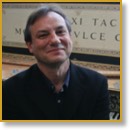
Lecture
Johann Sebastian Bach: His music and his life
(1685 – 1750)
Music lovers generally regard JS Bach as the greatest of early 18th century composers. In fact, he is so important in the history of music that we close down the Baroque period with his death in 1750. This lecture goes beneath the surface of Bach's music to decode some of his musical symbolism, to reveal some of his working methods and to highlight some of his aesthetic goals.

OCEAN LINERS 1800 - 1950: SHIPS THAT CHANGED OUR LIVES (OCTOBER 2022)
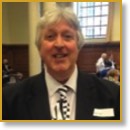
Lecture
Ocean liners 1800 -1950
The vision and genius of Isambard Kingdom Brunel underpins this global story of hopes and dreams, disasters and triumphs. A wide range of ships are featured including Great Britain and Great Western, Lusitania and Mauretania, Olympic and Titanic and, arguably Britain's most popular liner, the Queen Mary, brought to life through a diverse range of artworks, including some striking Art Deco Posters.
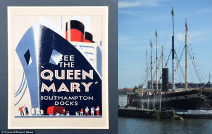
ANTIQUES AND THEIR VALUE (NOVEMBER 2022)
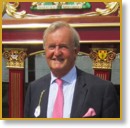
Lecture
‘Antiques and their Value’
JAMES ABBOTT MCNEIL WHISTLER "THE GENTLE ART OF MAKING ENEMIES"(JANUARY 2023)
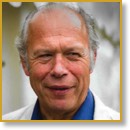
Lecture
James Abbott McNeill Whistler (1834 – 1903) “The Gentle Art of Making Enemies”
Self assured, affected and irreverent, the owner of a razor sharp wit, Whistler scandalized London society during the 1870s. American by birth, he trained as an artist in Paris where his bohemian lifestyle made him one of the personalities of the city. Annoyed by the criticisms of his work at the Salon des Refuses he moved to London only to find the English even more opposed to his ideas. The lecture explores the paradox of this man whose flamboyant and eccentric ways made him both admired and detested in equal measure and yet whose quiet, meditative paintings ultimately assured him a place alongside Oscar Wilde as one of the high priests of the Aesthetic Movement.
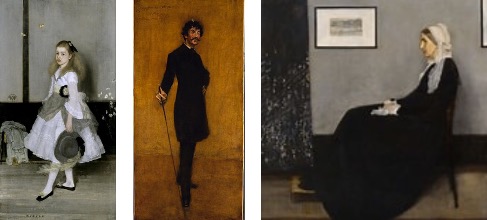
DISCOVERING MACDONALD GILL (1884-1947): ARCHITECT, ARTIST AND MAPMAKER (FEBRUARY 2023)
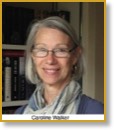
Lecture
Discovering MacDonald Gill (1884 – 1947): Architect, Artist and Mapmaker
MacDonald 'Max' Gill, younger brother of the sculptor Eric Gill, was an architect, letterer, and graphic artist of the first half of the twentieth century. He was famed for his pictorial map posters for the London Underground and painted map panels for landmark buildings such as Lindisfarne Castle and the Palace of Westminster. His architectural legacy lives on in the arts and crafts cottages he designed in rural Sussex and Dorset while the alphabet and badges he created for the standard military headstone are well-known. This talk by Max Gill's great-niece gives fascinating insights into the life and work of this remarkable but little-known artist.
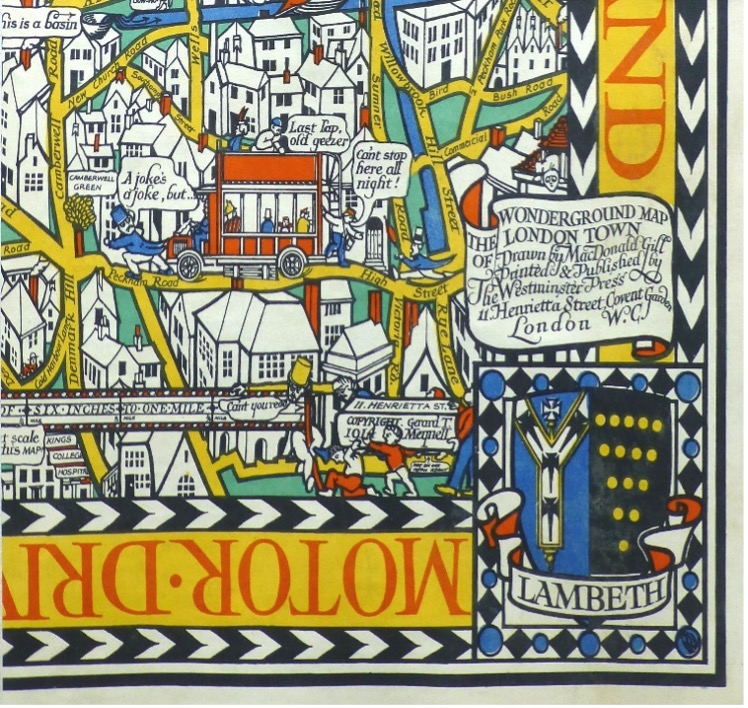
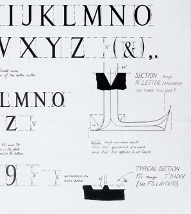
RESCUING THE MOSIACS OF ZEUGMA FROM THE FLOOD WATERS OF THE EUPHRATES (MARCH 2023)
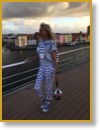
Lecture
Rescuing the mosaics of Zeugma from the flood waters of the Euphrates
Louise Schofield was instrumental in setting up the multinational rescue excavations at the Roman city of Zeugma, on the Euphrates, before it was flooded for the Birecik dam. In her lecturer she’ll talk about these magnificent ruins of ancient Roman villas with superb mosaics of the ancient city of Zeugma which have lain below pistachio groves in southeast Turkey for nearly 2000 years. Once it was on the Silk Road between Antioch and China, with a quay on the River Euphrates and an affluent population of 80,000. Now the race is on to preserve Zeugma from the rising waters of a new dam build for irrigation and energy production.
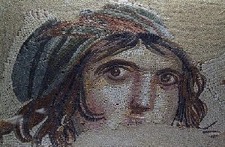
FRIDA KAHLO AND DIEGO RIVERA: THE GOLDEN AGE OF MEXICAN PAINTING (APRIL 2023)

Chloë has made ethnographic collections and carried out fieldwork in Mexico and Belize for the British Museum. She has curated various exhibitions of Mexican folk art, and has also worked on a number of television documentaries for the BBC and Channel 4. She is also a Research Associate in the Department for World Cultures at the Royal Ontario Museum in Toronto.
In 2016 the Mexican Government awarded her the prestigious Ohtli medal to thank her for her long-standing commitment to Mexican culture.
Lecture
Frida Kahlo and Diego Rivera: The Golden Age of Mexican Painting
Frida Kahlo (1907-1954) and Diego Rivera (1886-1957) have iconic status in Mexico. They were married in 1929.The Mexican Revolution of 1910 swept away the old régime and banished European influence in the arts. Kahlo and Rivera, in their different ways, helped to shape the cultural identity of twentieth-century Mexico. The Mexican mural movement, born during the 1920s, was destined to produce some of the greatest public art of the last century.
Diego Rivera’s panoramic images adorn the walls of public buildings, combining social criticism with a faith in human progress.
Frida Kahlo was arguably Mexico’s most original painter. She made herself the principal theme of her art. Her paintings reflect her experiences, dreams, hopes and fears.

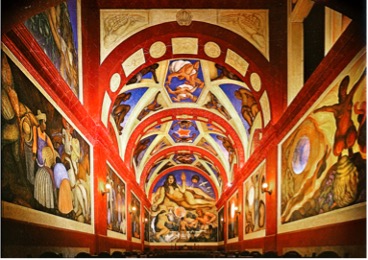
THE DREGS OF THE PEOPLE REMAIN: BLACK DEATH AND ITS AFTERMATH (MAY 2023)
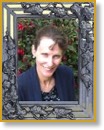
She has been lecturing and running study tours on Anglo-Saxon and Medieval history for some years and uses art – usually church art – as the evidence in her research as much as possible. She lectures for travel tours and on board small ships for Noble Caledonia, as well as for The Arts Society, U3A, Kent Federation of History and East Kent National Trust. She is a Fellow of the Royal Society of Arts and a member of the British Commission for Military History. She was recently given the Freedom of the City of London. In 2022 Imogen was elected Fellow of the Royal Historical Society.
Lecture
The Dregs of the People Remain: Black Death and its Aftermath
It is possible to see a shift in artistic tastes following the plague years which began in the mid C14th. This is understandable considering we now know that certainly 50% and perhaps 60% of the population of Europe and beyond perished in the first wave and that the disease recurred over the next 130 years.
There is a distinct increase in interest in the macabre, but also in explorations of what will happen in the next life; some of it surprisingly optimistic and amusing. We see more interest in ex-pagan images and specific demands for spiritual protection and so what might be seen as a dust-to-dust mentality also becomes one of no tragedy, no triumph.
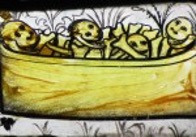
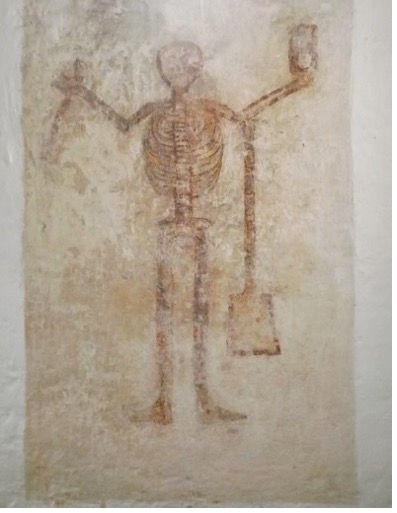
THE PAINTERS OF THE CIRQUE MEDRANO (JUNE 2023)

Lecture
The Painters of the Cirque Medrano
This lecture looks at the legendary Paris circus, from its beginning in 1875 until its closure in 1963. It was integral to Paris life and culture, attracting writers, painters and poets. Many artists, including Renoir, Lautrec, Degas and Picasso were inspired by, and captured, the magic of the circus. This is an intriguing journey of the Cirque Medrano’s history seen through the eyes of the Montmartre artists.
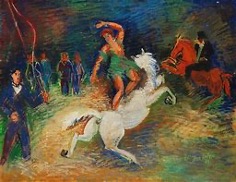
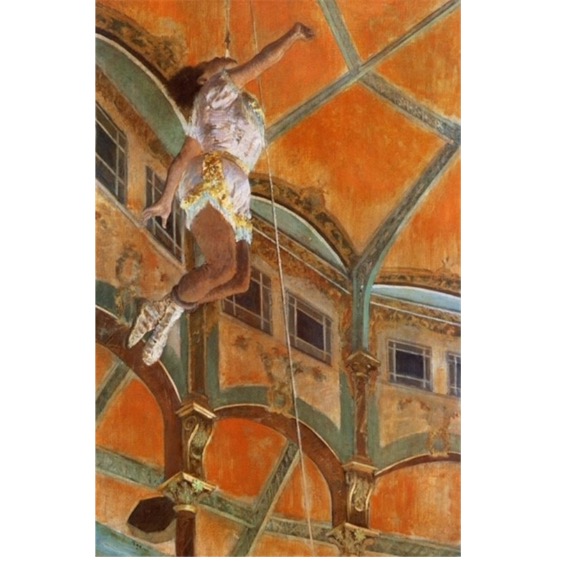
FROM BRONZES TO BANKSY - AN ARMCHAIR TOUR OF PUBLIC ART AND STREET ART IN LONDON (JULY 2023)

Lecture
From Bronzes to Banksy – an armchair tour of public art and street art in London
This is a talk about the remarkable range of art outside in the streets of London, discovering some of the most interesting works from across the centuries. They range from huge and expensive commissions to unofficial graffiti, which are sometimes audacious and often playful, but they all have a place in our society. The talk looks at why art is there, how it has developed over the years and discovers many hidden gems. The tour includes video clips recorded on location to give the talk a degree of reality.
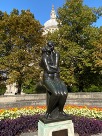
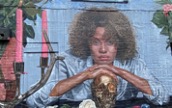
DAVID NASH: ONE MAN AND HIS WOOD (SEPTEMBER 2023)

Lecture
David Nash : One Man and his Wood David Nash is a contemporary artist, working mainly in wood. His large wood sculptures are sometimes carved or burned to produce blackening, his tools include chainsaws, axes, fire blowtorch, and yet his work shows an extraordinary knowledge of, and sensitivity to, the wood that he works with. This lecture provides an overview of his career, including some of his most famous works, such as Wooden Boulder and Ash Dome.
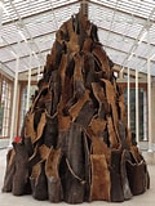
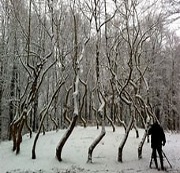
THE NOCTURNE IN 19TH CENTURY ART AND MUSIC (OCTOBER 2023)
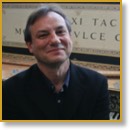
Lecture
The Nocturne in 19th Century Art and Music
In 1859 when Franz Liszt edited the Nocturnes of the Irish composer John Field, he said in his preface ‘to him we may trace the origin of pieces designed to portray subjective and profound emotion.’ Once Field had coined the term ‘nocturne’ in 1812, other composers such as Chopin, Mendelssohn, Fauré and Debussy followed suit and contributed to an increasing repertoire of atmospheric and meditative night pieces. However, from the early 1870s, the term ‘nocturne’ was used in the titles of paintings by the American painter, James Whistler. In addition to exploring the history of the musical nocturne, the lecture explores its relationship with the world of art.
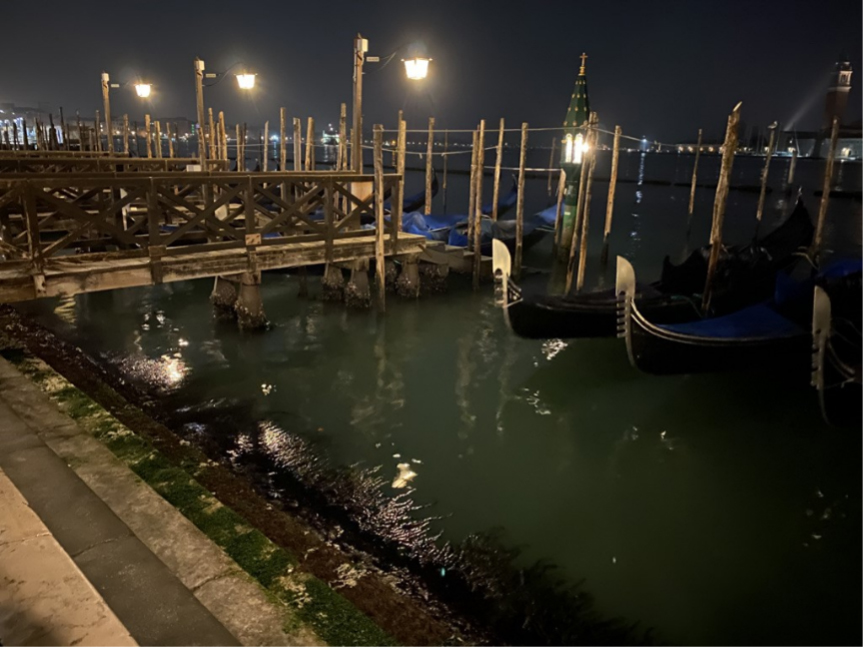
INN SIGNIA: THE ARTWORK AND STORIES BEHIND PECULIAR PUB NAMES (NOVEMBER 2023)

Lecture
Inn Signia: The artwork and stories behind peculiar pub names
Pubs and their signs are a fundamental part of our history and cultural heritage. In this colourful and entertaining lecture John shows some of the most interesting and distinctive signs before exploring the fascinating stories behind the origin of some of their peculiar names. Who could fail to be intrigued by ‘The Bucket of Blood’, the ‘Cow and Snuffers’ or even the ‘Eager Poet’ – and who on earth was ‘Blind Jack’?
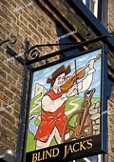
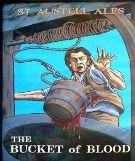
THE DANCING FAUN (JANUARY 2024)

Lecture
The Dancing Faun
In this lecture Bertie recounts the extraordinary tale of how a small bronze statue, which had sat in his grandfather’s garden for 40 years, was discovered as a masterpiece and ended up in the Getty Museum, California. Adriaen De Vries (c.1556-1626) was a Northern Mannerist sculptor born in the Netherlands. A technical virtuoso, he created spectacular bronzes for the most discerning patrons of his time, including the Holy Roman Emperor Rudolf II of Prague. He excelled in refined modelling and bronze casting and in the manipulation of patina and became the most famous European sculptor of his generation.

THE ARTISTIC DICKENS (FEBRUARY 2024)
Katey Dickens was the third child of Charles and Catherine Dickens – and called by her family the “favourite child” of her father. A force to be reckoned with from childhood onwards, she grew up in the excitement and turbulence of a famous home, to become an artist and a celebrity in her own right. Nicknamed “Lucifer Box” by her father because of her furious and fiery temper, Katey trained as a portrait painter and went on to become a major presence in the Victorian art world. She lived her life to the full, wrote hilariously revealing letters and challenges many of our 21st-century preconceptions of Victorian women. In common with the majority of female artists, however, her story has been lost in history. Katey was also my great great great aunt and when I began researching her for a biography I grew to love her for her brilliance as an artist and her refusal to give in to convention. Her story deserves to be heard.
Lucinda Hawksley
Lucinda Hawksley is an art historian, author, broadcaster, lecturer, presenter and award-winning travel writer, who has worked as an interviewee, consultant and presenter on TV and radio shows worldwide. Her latest book is Dickens and Travel, which explores the journeys made by her great great great grandfather, Charles Dickens, alongside his travel writing.
Lucinda has also written three biographies of female artists: Kate Perugini (née Dickens), Princess Louise and Lizzie Siddal. Her other books include, Letters of Great Women (2021), Elizabeth Revealed (2018), Dickens and Christmas (2017), The Writer Abroad (2017), Bitten by Witch Fever: Wallpaper and Arsenic in the Victorian Home (2016), Charles Dickens and his Circle (2016), Moustaches, Whiskers & Beards (Facial Hair in Art) (2014), and March, Women, March: Voices of the Women’s Movement (2013).
Lucinda co-wrote and narrated The Real Sherlock, a six-part podcast series about Arthur Conan-Doyle, for Audible, and is also a presenter on The Goldster Podcast, for which she interviews fellow authors. She is a Patron of the Charles Dickens Museum in London and of the De Morgan Foundation.
ART BEHIND BARS (MARCH 2024)

Angela has a BA(Hons) in Fine Art, a Diploma in Artistic Therapy (specialising in colour) and her paintings are widely exhibited both nationally and internationally. Her first book, In My Grandfather’s Shadow, was published by Penguin Transworld in July 2022
Lecture
Art behind Bars: The Role of the Arts in breaking the cycle of Crime, Prison and Re-offending
Years of working as an artist within the Criminal Justice System in England and Germany have given Angela unique insights into the destructive and costly cycle of crime, prisons and re-offending. In this thought-provoking talk she offers a deeper understanding of the minds, lives and challenges of offenders. And, with extraordinary slides of art projects and prisoners’ art, she demonstrates how within the process of creating art - of any discipline - there are vital opportunities for offenders to confront their crimes and develop the key life skills so essential in leading a positive and productive life. This talk is moving, informative and very original.
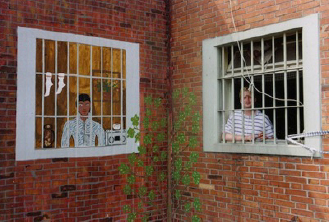
ART AFTER WINDRUSH (APRIL 2024)
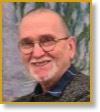
Lecture
Art after Windrush: postcolonial artists in Britain since 1948.
The lecture examines the contributions made by artists of African, Caribbean or Asian origin to British art since the SS Empire Windrush arrived in Tilbury from the West Indies in 1948. It considers, among others, the work of Sir Frank Bowling, Francis Newton Souza, Eddie Chambers, Yinka Shonibare, Sonia Boyce, John Akomfrah, Lubaina Himid and the Singh Twins, all of whom have achieved international recognition and respect, their works collected by museums world-wide. They have also set much of the agenda for British art of the late twentieth and twenty-first centuries.

Basile Watson. National Windrush Monument. 2022. Bronze. Waterloo Station
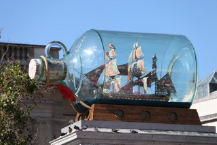
Yinka Shonibare: Nelson’s Ship in a Bottle, 2011. Glass, ship model, Dutch wax fabrics. Trafalgar Square 4th plinth commission (now located at the National Maritime Museum, Greenwich)
GREAT LENGTHS: THE ART AND ARCHITECTURE OF BRITAIN'S HISTORIC SWIMMING POOLS AND LIDOS (MAY 2024)
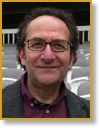
Lecture
Great lengths: the art and architecture of Britain’s historic swimming pools and lidos
Swimming is Britain’s second favourite form of physical recreation (after walking). Almost everyone has memories of visiting their local baths. But whilst not all these memories might be positive – drooping knitted cozzies anyone? – for many swimmers the baths themselves are cherished. Some, particularly those built in the late Victorian and Edwardian years, are rich with decorative tilework, stained glass, polished wood and terracotta detailing. This sense of municipal pride continued into the 1920s and ’30s, when Art Deco and Modernist lidos became the urban beaches of their day.
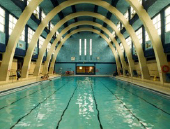
A BLAST FROM THE PAST. MEDIEVAL WOODWIND INSTRUMENTS (JUNE 2024)

He developed an interest in the subject while still at school as a result of participating in a performance of “The Taming of the Shrew” which involved the use of period instruments.
Jonathan studied Archaeology at Reading University where an interest in the Medieval prevailed and, through the observation of iconography, sculpture and manuscript illustration, he became fascinated with the musical instruments of that period. During the mid-seventies he began putting together a collection of modern replicas of the instruments, beginning with crumhorns and shawms.
After university he returned to work as a tenant farmer on the family farm in Buckinghamshire until 1988 and after a few years of odd jobbing moved to Somerset in 1992. Here he began collecting again and started giving talks and demonstrations. He now has a collection of over 40 instruments.
Lecture
A blast from the past, medieval woodwind instruments
This talk/demonstration consists of Jonathan’s collection of 18 woodwind instruments of the Middle Ages. These are reedpipes, shawm, bagpipe, double bagpipe, bladderpipe, hornpipe, crumhorn, cornemuse, kortholt, bone whistles, flute, double pipe, gemshorn, pipe and tabor, early recorders, portative organ and small hurdy-gurdy.
Jonathan speaks about each instrument and its evolution and its place in Medieval life in a lively and amusing manner. He then proceeds to play an appropriate tune on each one. Each instrument is accompanied by good images of them in the art and iconography of the age.
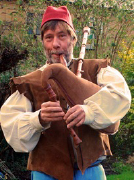
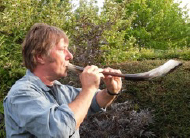
THE CULT OF CELEBRITY: OMAI, THE EXOTIC AND JOSHUA REYNOLDS (JULY 2024)

Leslie Primo has worked as an accredited lecturer for the Arts Society since 2009, and formerly taught outreach courses at the Courtauld Institute, a variety of art history courses as a visiting lecturer at Reading University in 2005 and 2007, and worked at the National Gallery and the National Portrait Gallery for a period of 18 years. He now teaches a variety of art history courses across many institutions, including Imperial College (South Kensington campus) and the City Literary in Covent Garden. Broadcasting appearances include BBC4: Art on the BBC, episodes on Michelangelo and JMW Turner, and Moving Pictures on Radio 4. Current areas of research include the story of the magi in art, and British painting from Renaissance to the Victorian period.
Lecture
The Cult of the Celebrity: Omai, the Exotic and Joshua Reynolds
In this lecture Leslie will look at the events that led up to Joshua Reynolds’s portrait of Omai becoming an emblematic and iconic image representing Britain at the very height of its imperial powers. To explore this famous moment from history when two worlds collided, Leslie will explore the key players in Omai’s story, his origins in Tahiti, his background and motivation to come to England, followed by his time in England and English society.
He will then go on to look at Joshua Reynolds’s ideas regarding his self image, his influences and how this related to his image of Omai. This will be followed by a look at what this portrait of Omai by Joshua Reynolds can tell us about 18th century English society, its perception or preconception of the Other or non-white European and how prevalent pseudo-scientific ideas in this period affected the way Omai was perceived and finally envisioned in Reynolds’s painting. Leslie will then look at what happened when Omai returned to the South Seas and impact of going back; can one ever go back? what is the impact of returning? Finally he will speak about the legacy of the image we call Omai, which has become an enigma in its own right.
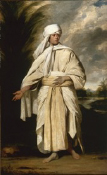
OLAFUR ELIASSON - PLAYING WITH LIGHT (SEPTEMBER 2024)

Lecture
Olafur Eliasson – Playing with Light
It is over twenty years since the young Icelandic/Danish artist Olafur Eliasson stunned the public with his weather project in Tate Modern’s Turbine Hall. His extraordinary gigantic sun created its own climate inside the building and more than two million people went to see it. Since then, Olafur Eliasson has created dozens of spectacular installations around the world, playing with light, air and water, bringing some of the drama of Iceland into urban settings.
This talk will cover many of his projects and will examine his underlying philosophies.
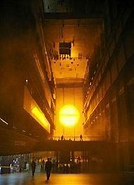
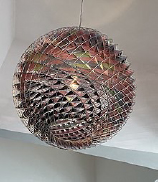
GRACE DARLING AND THE ART OF SAVING LIVES AT SEA (OCTOBER 2024)
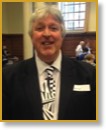
Lecture
Grace Darling and the art of saving lives at sea
Darling's daring rescue of steamship passengers off the Northumberland coast in 1838 brought her international fame. Discover more about her bravery and short life (died aged 26) living in the Brownsman and Longstone lighthouses and influence, alongside the artistic contribution that has helped to keep her in the public eye. Grace became the "poster girl" of the RNLI and was the first woman awarded their medal for gallantry. This talk also includes references to life-saving inventions by Henry Greathead, Captain Manby and John Dennett and Sir William Hillary, the founder of the RNLI. 2024 is the bicentenary of the founding of the RNLI (established in 1824)
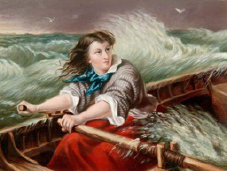
THE CURIOUS HISTORY OF CHRISTMAS FOOD (NOVEMBER 2024)
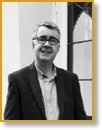
The Curious History of Christmas Food
The foods we eat at Christmas have a long, curious and visually spectacular history. This lecture narrates and illustrates that history from Medieval boar’s head and brawn, by way of highly decorated seventeenth century mince pies to the almost forgotten Twelfth Night Cake. Medieval illuminated manuscripts, paintings and prints from the seventeenth to the nineteenth centuries, and illustrations from cookery books provide us with images of some of the lost glories of the British Christmas feast.
Dr Peter Ross has a History of Art degree, an MA in London history, a PhD in the cultural history of an English Criminal, qualifications in the teaching of adults and is an accredited Arts Society Lecturer. Currently Principal Librarian at Guildhall Library, he has for 20 years lectured on a broad range of topics including the history of English books, portraiture, and London history. Peter has appeared on TV and radio as a consultant on the 18th century criminal Jack Sheppard and on the history of English food. His most recent publication, The Curious Cookbook, was published by the British Library.
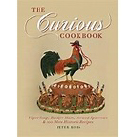
NAZI LOOTING AND WWII (JANUARY 2025)

Nazi looting and WW II
The Nazis looted over 20% of Western Art during World War II, confiscating art from Jewish families and emptying museums throughout Europe. This lecture will provide an overview of Nazi looting by setting the scene in Nazi Germany, discussing Hitler’s obsession with art and how the Monuments Men recovered art after the war. Several landmark cases will be discussed in detail, including Gustav Klimt’s celebrated Portrait of Adele Bloch Bauer and the stash of over 1200 artworks found in possession of the son of a notorious Nazi dealer.
Shauna Isaac has been active in World War II art restitution for several years and has worked with families and government organisations to recover Nazi looted art. She set up the Central Registry on Looted Cultural Property and served as a member of the Working Group for the Holocaust Era Assets Conference in Prague. She is a regular lecturer at the Sotheby’s Institute of Art. Her publications include articles for The Art Newspaper, TLS and Art Quarterly. She is a contributor to the book ‘Insiders/Outsiders: Refuges from Nazi Europe and their contribution to British Visual Culture’ (2019).
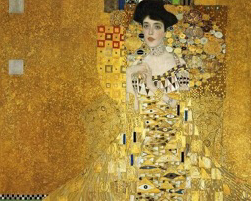
HIDDEN CANVASSES: STREET ART AND THE CITY (FEBRUARY 2025)
Lecture
There’s more to the world of street art than Banksy - Hidden Canvases is a beginner's guide to the biggest art movement since pop art. Hidden Canvases explores the key stages in street art's growth examining the different elements and styles that comprise the scene with no rules. From the international superstars to the local underground heroes you're guaranteed to leave knowing your Invader from your Aryz and who knows - you might even start looking at the world a little differently.
Doug Gillen is the man behind Fifth Wall TV, a London based production channel, and digital platform that investigates all aspects of graffiti and street art. Originally from Scotland. He created Fifth Wall TV six years ago, and he’s been filming and talking about the world of street art and graffiti ever since. From train writing in New York to interactive technology that brings murals to life, the concept of un-commissioned public art is a very different beast to that which it once was.
There’s more to the world of street art than Banksy - Hidden Canvases is a beginner's guide to the biggest art movement since pop art. Hidden Canvases explores the key stages in street art's growth examining the different elements and styles that comprise the scene with no rules. From the international superstars to the local underground heroes you're guaranteed to leave knowing your Invader from your Aryz and who knows - you might even start looking at the world a little differently.
Doug Gillen is the man behind Fifth Wall TV, a London based production channel, and digital platform that investigates all aspects of graffiti and street art. Originally from Scotland. He created Fifth Wall TV six years ago, and he’s been filming and talking about the world of street art and graffiti ever since. From train writing in New York to interactive technology that brings murals to life, the concept of un-commissioned public art is a very different beast to that which it once was.
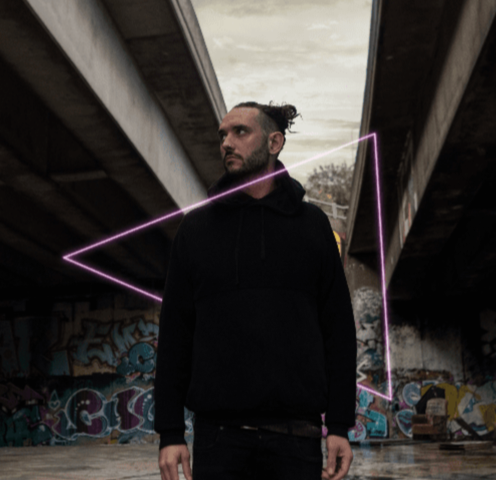
FABER AND FABER: ITS HISTORY AND DESIGNS (MARCH 2025)
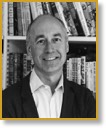
Full of stories and personal insight, this lecture traces the history of one of London’s leading publishers through its illustrations, covers and designs. It will feature artists from Rex Whistler and Barnett Freedman to Peter Blake and Damien Hirst and design concepts from the typographical excellence pioneered by Berthold Wolpe to the various ‘grids’ used by the agency Pentagram.
Toby was a banker and management consultant before spending four years as managing director of the company founded by his grandfather, Faber and Faber. He remains on its Board and is Chairman of its sister company, Faber Music, an Arts Society lecturer, and a director of Liverpool University Press.Toby has written three works of narrative non-fiction - Stradivarius (2004), described in The New York Times as ‘more earthy, enthralling and illuminating than any fiction could be’, Faberge's Eggs (2008) and Faber & Faber: The Untold Story (2019) - and one novel, Close to the Edge (2019). Only one of those books (the obvious one) was published by Faber.
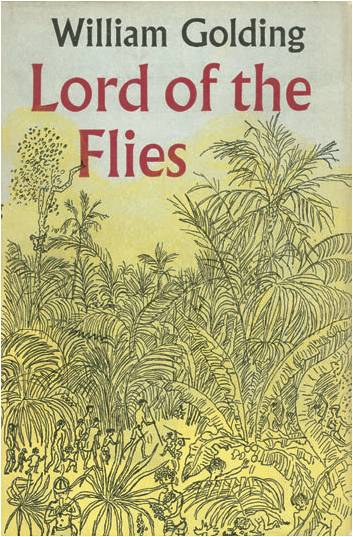
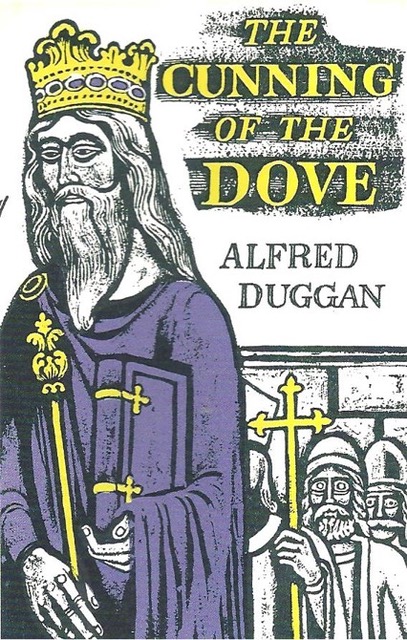
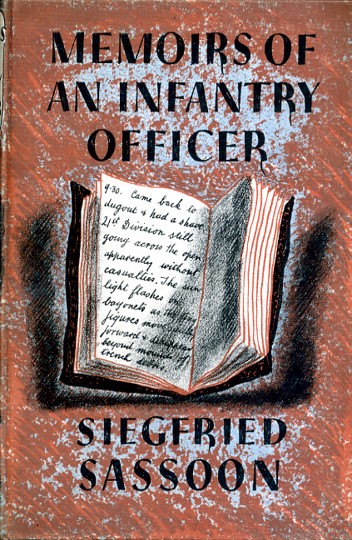
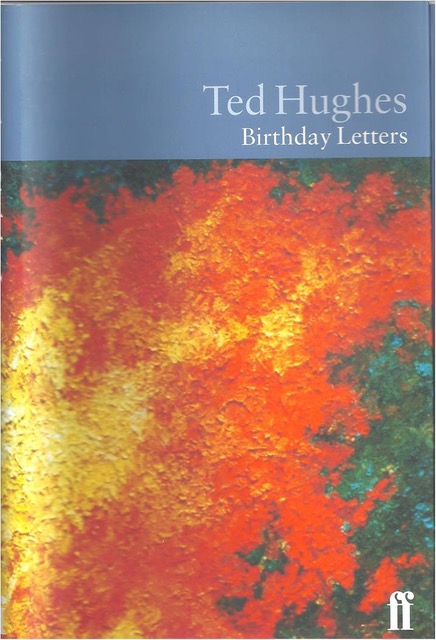
THE GREEN MAN IN ENGLISH CHURCHES (APRIL 2025)

More correctly called ‘foliate heads’, there was a proliferation of Green Man images around the middle of the C14th. The lecture discusses how the image may have evolved from pagan and Classical times and what its purpose may have been. Although they may originally have been connected to ancient fertility rites, the majority show either distorted or very mature faces which seems to contradict the notion that they were associated with May Day frolickings. It may be that we can learn more about its meaning if we take into account the historical events of the time and their effect on the nation’s imagination.
Imogen Corrigan was in the army for nearly 20 years and retired in the rank of major. She then gained a degree in Anglo-Saxon and Medieval History, followed by an MPhil from the University of Birmingham.She has been lecturing and running study tours on Anglo-Saxon and Medieval history for some years and uses art – usually church art – as the evidence in her research as much as possible. She lectures for travel tours and on board small ships for Noble Caledonia, as well as for The Arts Society, U3A, Kent Federation of History and East Kent National Trust. She is a Fellow of the Royal Society of Arts and a member of the British Commission for Military History. She was recently given the Freedom of the City of London. In 2022 Imogen was elected Fellow of the Royal Historical Society.
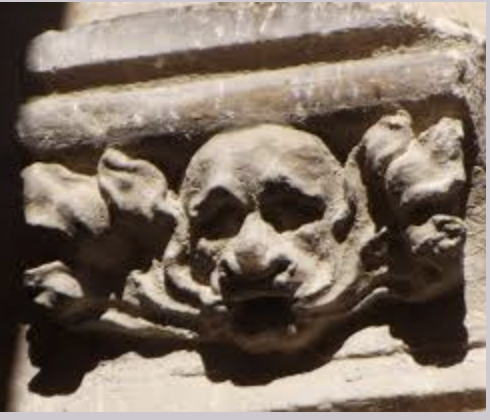
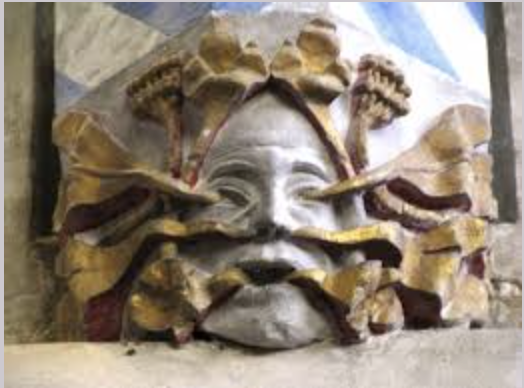
CREATING PARADISE: THE HISTORY OF THE ENGLISH GARDEN (MAY 2025)
Lecture
In this lecture we shall trace the development of English gardens from Tudor times through to the twentieth century. Our early formal gardens owe much to the influence of Italy and France, and although most were destroyed in the later vogue for the ‘naturalistic’ landscape park, we can form an excellent idea of their appearance through paintings and engravings. In the 17th century, the more intimate gardens of the Tudor and Stuart period give way to grandiose formal layouts inspired by Versailles and many layouts of great formal schemes survive. However, whereas the formal garden was based on ideas from abroad, the creation of the eighteenth century naturalistic landscape park was a uniquely English achievement, and one that revolutionised the design of gardens and parks throughout Europe. In the Victorian period, we see a return to formality, but in the Edwardian gardens of Lutyens and Jekyll a compromise is reached: the plan is formal and architectural, but the planting is generous and naturalistic. The partnership resulted in some of the finest English gardens, and had a lasting influence on twentieth-century design.
Barbara Peacock, MA, FRSA is an architectural historian. Her particular interest is in the architecture of the country house and the development of historic gardens and landscapes. This interest stimulated research in the Czech Republic, historically part of the Habsburg Empire and an area rich in great houses and châteaux. In 2015 she was awarded the prestigious Lifetime Achievement Award by Czech Tourism in recognition of her important contribution to the preservation of Czech heritage, history and culture and in 2017 she received the Points of Light Award from the then Prime Minister, Teresa May in recognition of the same. She is founder of Wessex Fine Art Study Courses and has led many successful tours in Britain and abroad, and in particular to the Czech Republic. She lectures for organisations such as the National Trust, the Art Fund and The Arts Society. She was formerly Assistant Keeper in the Department of Fine Art at Birmingham City Art Gallery and Adult Education Tutor in Fine Art at Southampton University.
In this lecture we shall trace the development of English gardens from Tudor times through to the twentieth century. Our early formal gardens owe much to the influence of Italy and France, and although most were destroyed in the later vogue for the ‘naturalistic’ landscape park, we can form an excellent idea of their appearance through paintings and engravings. In the 17th century, the more intimate gardens of the Tudor and Stuart period give way to grandiose formal layouts inspired by Versailles and many layouts of great formal schemes survive. However, whereas the formal garden was based on ideas from abroad, the creation of the eighteenth century naturalistic landscape park was a uniquely English achievement, and one that revolutionised the design of gardens and parks throughout Europe. In the Victorian period, we see a return to formality, but in the Edwardian gardens of Lutyens and Jekyll a compromise is reached: the plan is formal and architectural, but the planting is generous and naturalistic. The partnership resulted in some of the finest English gardens, and had a lasting influence on twentieth-century design.
Barbara Peacock, MA, FRSA is an architectural historian. Her particular interest is in the architecture of the country house and the development of historic gardens and landscapes. This interest stimulated research in the Czech Republic, historically part of the Habsburg Empire and an area rich in great houses and châteaux. In 2015 she was awarded the prestigious Lifetime Achievement Award by Czech Tourism in recognition of her important contribution to the preservation of Czech heritage, history and culture and in 2017 she received the Points of Light Award from the then Prime Minister, Teresa May in recognition of the same. She is founder of Wessex Fine Art Study Courses and has led many successful tours in Britain and abroad, and in particular to the Czech Republic. She lectures for organisations such as the National Trust, the Art Fund and The Arts Society. She was formerly Assistant Keeper in the Department of Fine Art at Birmingham City Art Gallery and Adult Education Tutor in Fine Art at Southampton University.
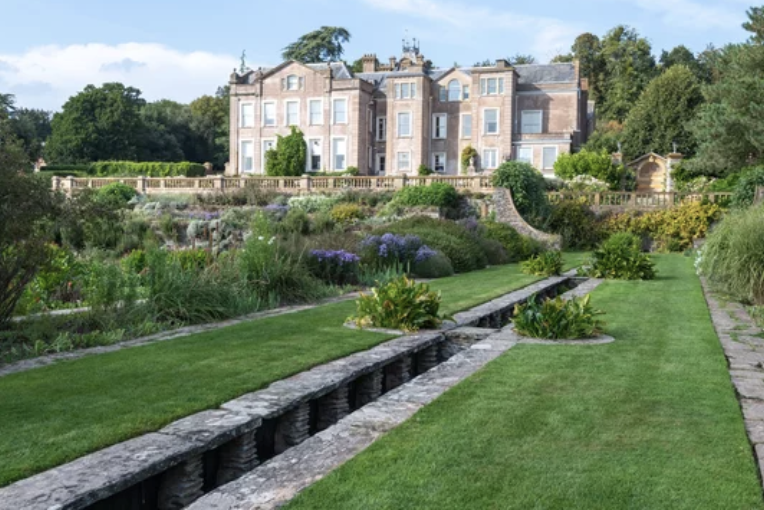
FIRST, CATCH A SQUIRREL: 15 AND 16C PAINTING TECHNIQUES (JUNE 2025)

The 14th century artist Cennino Cennini recommended using “the chicken bones that you will find under the dining table” for making charcoaled bone black to paint with. His treatise, The Artists’ handbook, gives us an understanding of some of the surprising materials which any artist had to master before he could begin to paint, such as the tail of a squirrel to make his paintbrushes. But many of these materials were difficult to use and have an effect on the finished look of paintings from the centuries before industrial processes changed the artist’s world. This lecture will explain the techniques and the reasons for some of the features of 15th and 16th century paintings which may seem odd to our modern eyes. I will bring examples of the materials mentioned in the talk to pass round and discuss with participants.
Chantal Brotherton-Ratcliffe graduated from Edinburgh University with MA in History of Art, and completed her Ph D at the Warburg Institute, University of London. She trained briefly as a paintings conservator, but her utter ignorance of Chemistry drove her to the more forgiving embrace of Art History. She has worked for over 30 years at Sotheby’s Institute of Art, and for a number of institutions in London including the National Gallery, the Wallace Collection and the RA, as a lecturer teaching a wide range of topics within fifteenth, sixteenth and seventeenth century European art. Her interest is in the approach of the traditional connoisseur, teaching the analysis of those stylistic features of a painting or work of art, that can tell us who the artist is, and when a painting is a copy, good or bad.
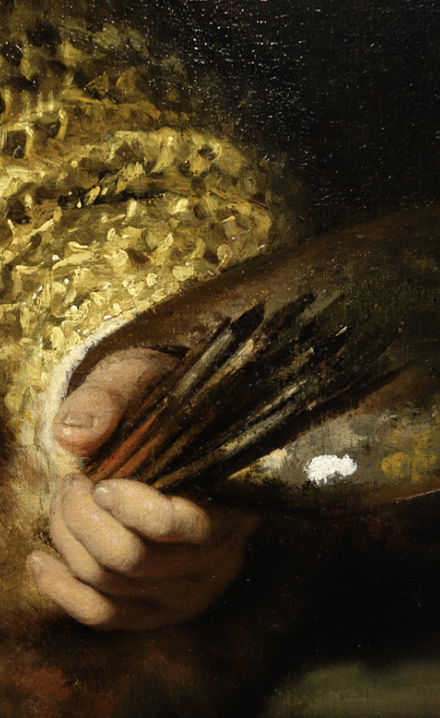
THE ART OF THE CARTOONIST (JULY 2025)

In this talk Harry will be tracing the history of his profession through the work of artists who have made an impact upon language, culture, history and, most importantly, upon him. These include James Gillray, Charles Schultz, Herje (Georges Remy), Posy Simmonds and Ronald Searle. Harry will also be drawing live. Prepare to hear some tricks of his trade, where to put eyebrows for maximum effect, learn what a plewd is and where you should use it, and discover exactly what the Eskimo brothers said in the Funniest Joke Ever (possibly).
Harry Venning is a cartoonist, comedy writer and lecturer based in Brighton. He is best known for The Guardian’s weekly strip cartoon Clare In The Community, which he adapted into a long running Radio 4 sitcom. He is a former UK Strip Cartoonist Of The Year, Sony Radio Award winner and Honorary Fellow of Aberystwyth University.


SILVER FILIGREE OF KOSOVO (SEPTEMBER 2025)

The Silver Thread: Silver Filigree and traditional art in Kosovo
Kosovo's silversmithing skills are mentioned in Dante and silver has been said to give the country both its war and its golf course. The lecture offers an insight how this could be true, as well as sharing images of what's done with the metal mined in Europe's newest country, showing the processes which result in stunning jewellery and lacy metal artefacts but also explaining how these things are lived, worn and used. This is therefore an insight into both how Kosovo shapes its silver, and how silver has shaped Kosovo.
Elizabeth Gowing studied English Literature at Magdalen College, Oxford and subsequently trained to be a teacher and completed her MA at the Institute of Education, University of London. She worked in primary education in Hackney, Lambeth and Islington as well as in education policy before moving to Kosovo in 2006. In 2009, she co-founded The Ideas Partnership, a charitable NGO that addresses challenges to the environment, education and cultural heritage, and supports the Roma, Ashkali and Egyptian communities in Fushë Kosovë.
She is the author of five travel books, of which four are about Kosovo and the Balkans.
In 2016 the President of Kosovo awarded her the Mother Teresa medal for her humanitarian work. In 2017 she was named by British Prime Minister Theresa May a 'point of light' for volunteering around the world.
In 2018 the new Kosovan President gave her Kosovan citizenship by decree.
At the end of 2021, Kosovan Prime Minister Albin Kurti appointed her to his cabinet as adviser on community affairs. Currently she is based in Kosovo, Albania and England.
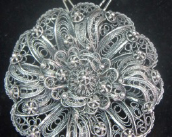
© 2023 SPITHEAD ARTS | Arts Appreciation Society | email us | Privacy Statement | Constitution